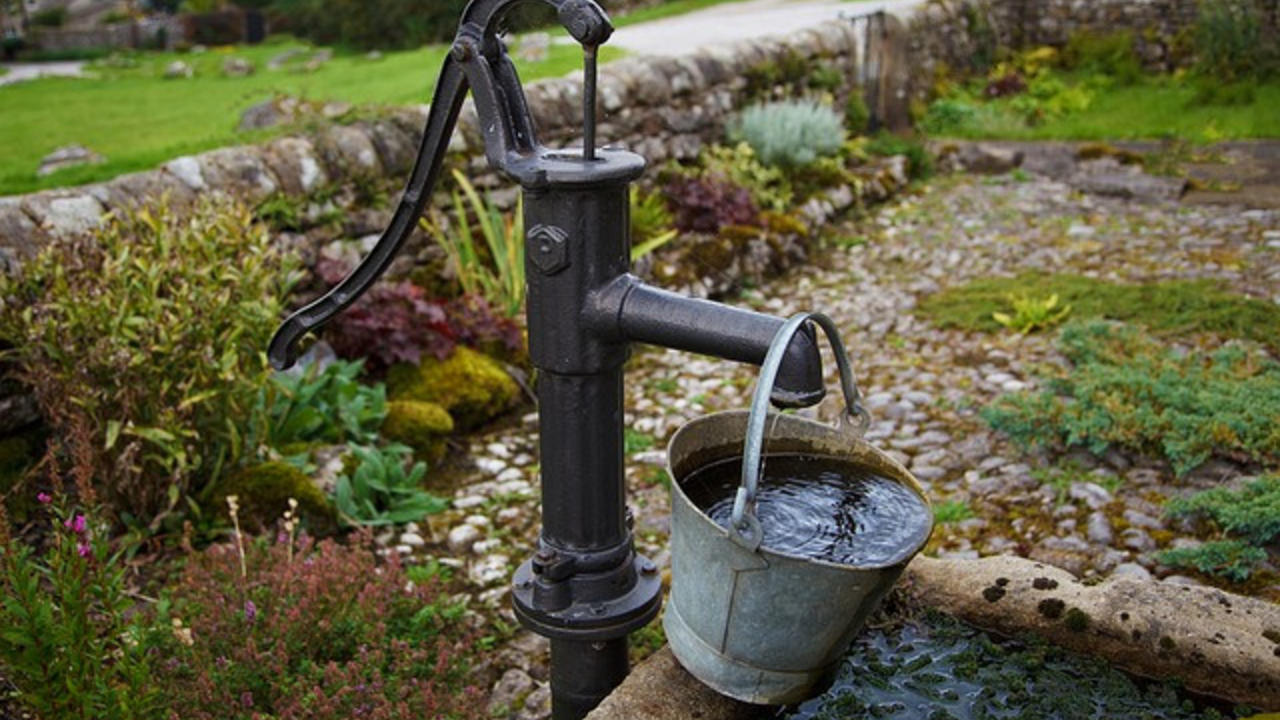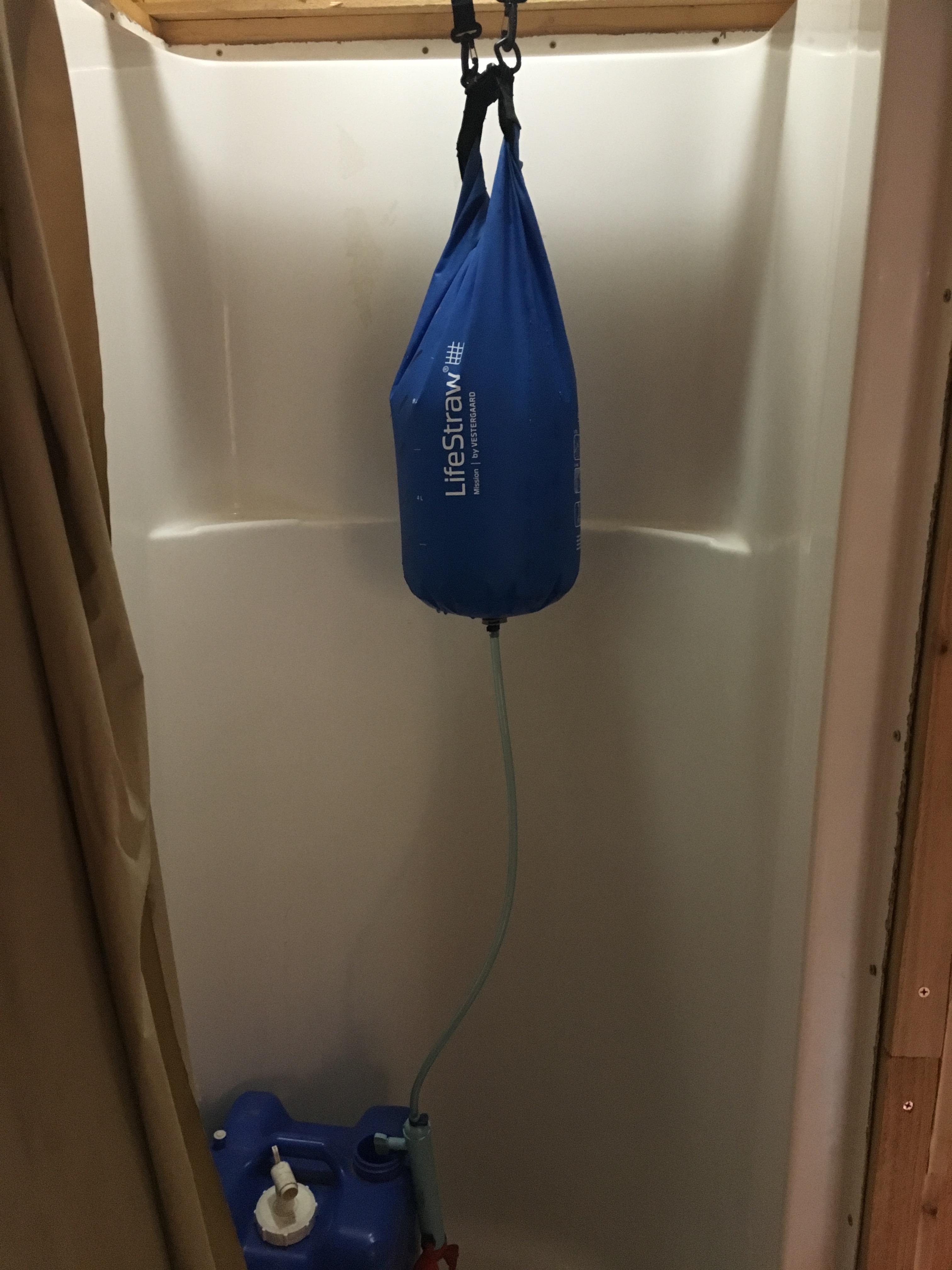Off Grid Water Systems: Five Realistic Options

When it comes to living off the grid, water should be one of your major priorities. In fact, much of your off grid lifestyle will be dictated by the availability of water. Additionally, you may find the perfect piece of property for the homestead except for access to water. Since water is such an important resource, the point of this post is to explore several options for off grid water systems.
City Water: Not really an off grid water system

There are numerous rural properties that I’ve seen that are perfect for a homestead and those properties include access to city water. Now I do understand that one of the biggest reasons that most of us homestead or live off the grid is that we value our personal freedom. Consequently, hooking up the local infrastructure may be the last thing on your mind. Besides, you may feel as if this is not even being off the grid at all.
However, if you choose to take advantage of this option, I strongly recommend having another off grid water system in place. In the event of an emergency or a disaster situation, city water can easily become disrupted or contaminated.
Well Water: Independent Water System

Having your own well is one of the best off grid water systems to have in place. Besides, this will ensure that you are totally independent.
One important caveat about wells. Before you purchase a property, talk with surrounding land owners, and even a local well driller to determine the average depth of wells in the area. Well depth can vary greatly from county to county so do your homework. Additionally, make certain that property access is sufficient for a drilling rig. These rigs are enormous and extremely heavy.
Once the well is in place, keep in mind that most well pumps are electric. This means that when the electricity goes out, so does the well pump. It is possible to have a hand operated pump as a back up but they are also very expensive. For the amount of money spent, a much better option is a solar powered back up system. If you live in an appropriate area to take advantage of wind energy, a wind powered pump is another great back up. Either way, if the grid goes down your water needs are covered.
It is extremely important to recognize that if you live in an area that is prone to flooding, well water can become contaminated. So, be prepared by having another off grid water system in place.
Cistern

Water cisterns are an inexpensive option for an off grid water system. However, this means you at least have to have access to a water source. This can be a lake, stream, pond, or even city water. (Some rural communities have a central water well where locals come to a fill truck mounted tanks and then haul it to their property.) Water is hauled to your property and then placed in a cistern. With this type of system, you will need a pump and some basic plumbing to access the water depending on the location of the cistern.
This is in fact what I do for my cabin. I pump water out of a stream into a truck mounted tank, haul it to the cabin, chlorinate it and drain it into a cistern.
Also, keep in mind that while most people think of a cistern as a large water tank, do not dismiss the possibility of a large catchment basin.
Rain Water Collection System

In some parts of the world rain water collection is a vital resource. Life simply would not be possible without it. This type of water system is generally easy and inexpensive to set up. However, depending on how much water you need to collect the system can cost a few hundred or a few thousand dollars.
Gravity fed off grid water system

Yes, there are still parts of the world where access to electricity is either too expensive or simply impossible. This is where a gravity fed off grid water system comes into play.
This type of system can be insanely simple or complicated. It all depends on the distance the water needs to travel and the terrain involved. Additionally, the water pressure required at the other end makes a huge difference in the system design. This is especially true if, for example, you have an on-demand water heater that needs a specific pressure in order to operate.
If you have simple terrain and only one hill, you can get away with using one diameter of pipe. If you have to deal with slight inclines, then you will have to change the pipe diameter (smaller) in order to produce greater water pressure to over come the incline.
To measure the pressure in your water pipe, you need to know the drop in elevation. Every 2.31 feet of elevation drop = 1 PSI of head pressure.
Final Words
All of these off grid water systems are realistic options depending on your location and property access. Some are obviously more expensive than others. Drilling a well may be costly but it provides an uninterrupted source of water. Purchasing a cistern and setting up a gravity fed system is easy and inexpensive but you must constantly haul water. Each system has advantages and disadvantages. Do your homework and decide which is best for your off grid home.
For reading on a related topic, read about how to maintain a safe water supply.
Other fun articles:
10 Ways to Test Drive the Off Grid Life Before You Commit
Living Off the Grid: Four Realistic Options
Go off grid and live well,
Patrick
Stay connected with us to receive regular updates.
Join our mailing list to receive the latest news and updates from our team. We always respect your privacy. Your information will never be shared.



